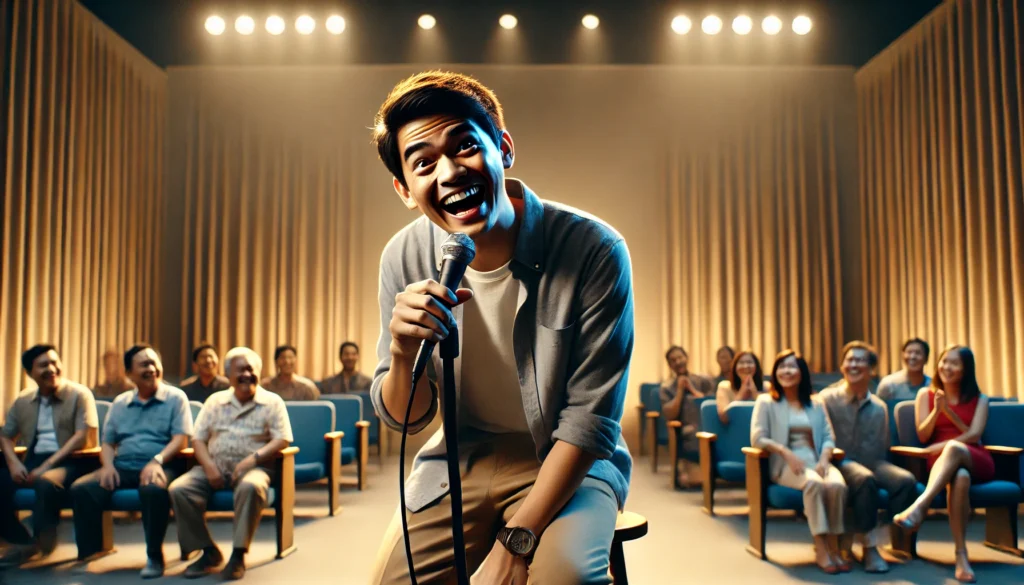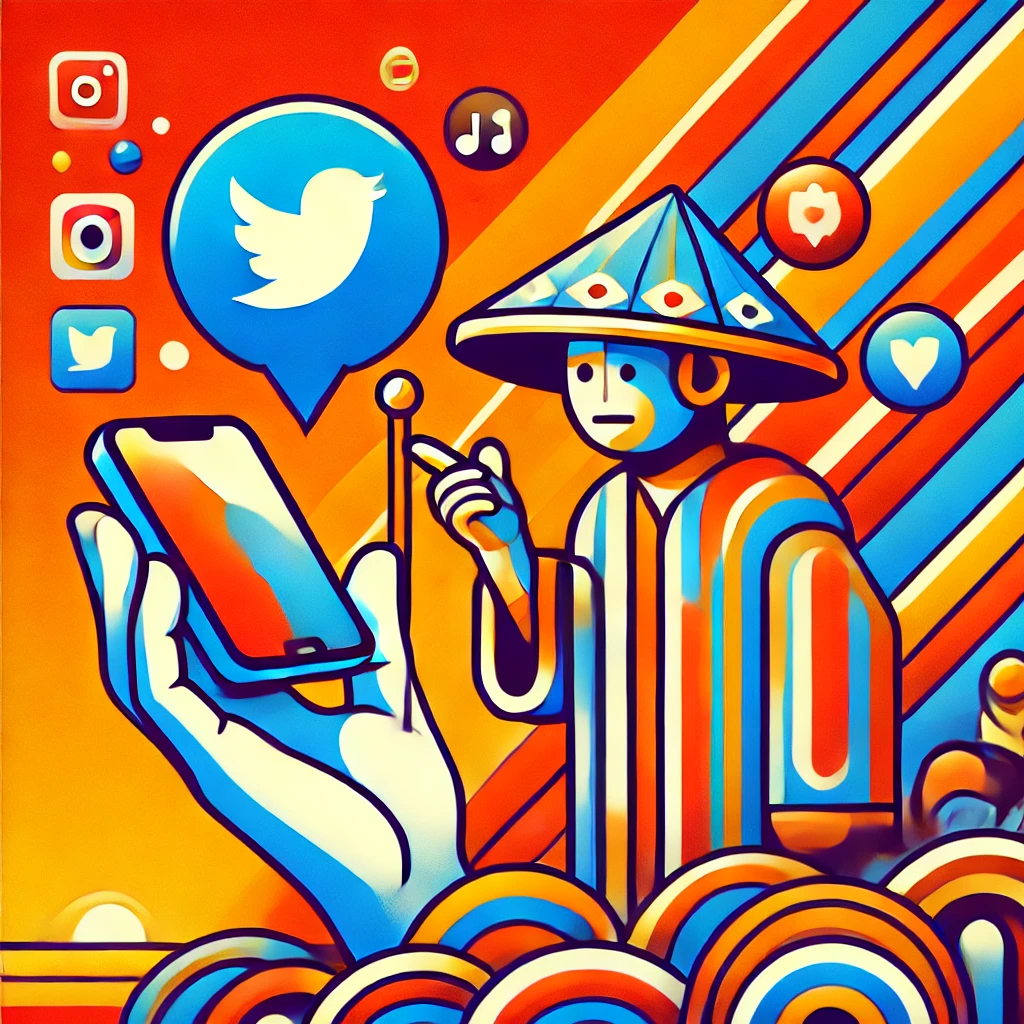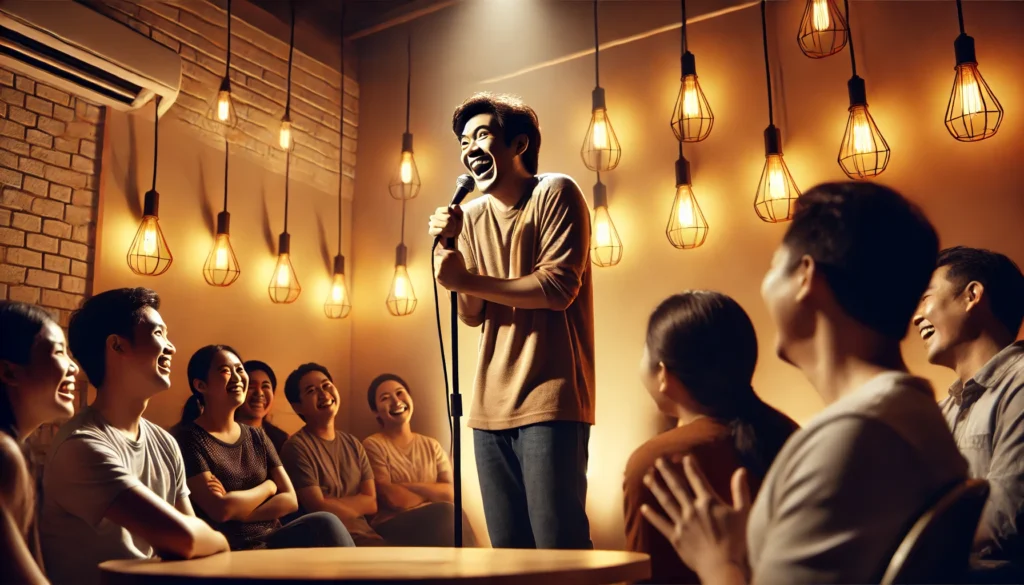Ah, the Philippines – a country known for its breathtaking beaches, mouthwatering cuisine, and of course, its people’s unparalleled ability to find humor in just about anything. From the bustling streets of Manila to the farthest corners of Mindanao, laughter echoes through the archipelago like the sweetest melody. But what’s the secret behind this nationwide chuckle fest? Well, my friends, it’s none other than the brilliant minds and quick wits of Filipino comedians. These masters of Pinoy humor have been tickling our funny bones for generations, armed with nothing but their charm, creativity, and an uncanny ability to turn even the most mundane situations into side-splitting comedic gold. So, grab your favorite snack (might we suggest some crispy chicharron?), sit back, and prepare to embark on a hilarious journey through the world of Filipino comedy!
The Evolution of Filipino Comedy: From Vaudeville to Social Media
From stage to screen: The early days
Picture this: it’s the early 20th century, and Filipino comedy is just starting to take its baby steps. The vaudeville stage was where it all began, with performers like Katy de la Cruz and Pugo & Togo entertaining audiences with their slapstick humor and witty banter. As time marched on, so did the comedy scene, evolving from stage performances to radio shows, and eventually making its way to the silver screen. The 1950s and 60s saw the rise of iconic comedians like Dolphy and Panchito, who became household names with their hilarious antics and perfect timing. These pioneers laid the foundation for generations of comedians to come, paving the way for the diverse and dynamic comedy landscape we see today.
The sitcom boom and beyond
Fast forward to the 1980s and 90s, and Filipino comedy was experiencing a renaissance of sorts. Television became the new playground for comedians, with sitcoms like “John en Marsha” and “Home Along Da Riles” dominating primetime slots. These shows not only provided endless laughter but also served as a mirror to Filipino society, addressing social issues with a humorous touch. As we entered the new millennium, the comedy scene continued to evolve, embracing new formats like sketch comedy shows, stand-up specials, and even improv performances. The rise of social media in recent years has opened up even more avenues for comedic expression, allowing aspiring comedians to showcase their talents to a global audience with just a smartphone and a witty caption.
The Many Faces of Filipino Comedy: Styles and Subgenres
Slapstick and physical comedy: The art of falling with grace
If there’s one thing Filipino comedians excel at, it’s the ability to make us laugh without saying a word. Slapstick and physical comedy have been staples of Pinoy humor since the early days, with comedians like Babalu and Redford White turning clumsiness into an art form. From exaggerated facial expressions to perfectly timed pratfalls, these masters of physical comedy remind us that sometimes, actions really do speak louder than words – especially when those actions involve accidentally walking into a door or slipping on a banana peel.
Wordplay and puns: The language of laughter
Filipinos have a unique relationship with language, seamlessly blending Tagalog, English, and various regional dialects to create a linguistic tapestry that’s ripe for comedic exploitation. Comedians like Michael V. and Ate Gay have made careers out of their ability to twist words and phrases into hilarious puns and double entendres. Whether it’s clever wordplay or groan-inducing dad jokes, Filipino comedians prove time and time again that laughter truly is a universal language.
Parody and satire: Holding up a funhouse mirror to society
In a country where politics can sometimes feel like a circus, it’s no surprise that parody and satire have become powerful tools in the Filipino comedian’s arsenal. Shows like “Bubble Gang” and “Pepito Manaloto” use humor to shine a light on social issues, political scandals, and cultural quirks. These comedians don’t just make us laugh – they make us think, proving that sometimes the best way to deal with life’s absurdities is to simply laugh at them.
The Icons of Filipino Comedy: Legends Who Left Us in Stitches
Dolphy: The King of Comedy
No discussion of Filipino comedy would be complete without paying homage to the one and only Dolphy. Born Rodolfo Vera Quizon Sr., Dolphy’s career spanned an impressive seven decades, during which he starred in over 200 films and numerous television shows. His most iconic role was arguably John Puruntong in the long-running sitcom “John en Marsha,” where he portrayed a lovable everyman dealing with the trials and tribulations of family life. Dolphy’s impeccable timing, versatility, and genuine warmth endeared him to generations of Filipinos, earning him the well-deserved title of “Comedy King.”
Vic Sotto: The Bossing of Laughter
If Dolphy was the king, then Vic Sotto is undoubtedly the “Bossing” of Filipino comedy. As one-third of the legendary comedy trio Tito, Vic & Joey, Sotto has been a fixture in Philippine entertainment for decades. From his early days in “Eat Bulaga!” to his countless movie roles and sitcoms, Vic has consistently delivered laughs with his deadpan humor and impeccable comedic timing. But perhaps what sets Vic apart is his ability to evolve with the times, remaining relevant and beloved by audiences of all ages.
Michael V.: The Man of a Thousand Faces
When it comes to versatility in comedy, few can match the chameleon-like abilities of Michael V. (real name Beethoven Bunagan). Known for his spot-on impersonations and clever parody songs, Michael V. has become a comedy icon in his own right. Whether he’s channeling local celebrities or international stars, Michael V.’s uncanny ability to transform himself never fails to leave audiences in stitches. His contributions to shows like “Bubble Gang” and “Pepito Manaloto” have cemented his status as one of the most talented and beloved comedians of his generation.
The New Wave: Up-and-Coming Filipino Comedians to Watch
As we look to the future of Filipino comedy, a new generation of talented performers is emerging, ready to carry the torch of laughter into the digital age. Here are just a few of the rising stars making waves in the comedy scene:
Stand-up sensations
- Alex Calleja: Known for his self-deprecating humor and relatable jokes about family life, Alex has gained a massive following both in the Philippines and internationally.
- GB Labrador: With his unique blend of observational humor and social commentary, GB is quickly becoming one of the most sought-after stand-up comedians in the country.
- Empoy Marquez: From his humble beginnings as a bit player to his breakout roles in romantic comedies, Empoy has charmed audiences with his awkward yet endearing brand of humor.
Digital comedians
- Ethel Booba: While not exactly new to the entertainment scene, Ethel has found a second wind as a Twitter sensation, delighting followers with her witty one-liners and savage comebacks.
- Macoy Dubs: With his hilarious lip-sync videos and character sketches, Macoy has become a social media darling, amassing millions of followers across various platforms.
These up-and-coming comedians, along with many others, are pushing the boundaries of Filipino comedy and ensuring that the future of Pinoy humor is in good hands.
The Impact of Filipino Comedy: More Than Just Laughs
While the primary goal of comedy is to entertain, Filipino comedians have long understood the power of humor to address serious issues and bring people together. Here’s a quick look at some of the ways Filipino comedy has made a positive impact on society:
| Impact Area | Description |
|---|---|
| Social Commentary | Many comedians use their platform to shed light on social issues, from poverty to corruption, in a way that’s both accessible and thought-provoking. |
| Cultural Pride | By celebrating uniquely Filipino experiences and quirks, comedians help foster a sense of national identity and pride. |
| Stress Relief | In a country that faces its fair share of challenges, comedy provides a much-needed outlet for stress and a way to find joy in everyday life. |
| Language Preservation | Through wordplay and regional humor, comedians help keep local languages and dialects alive and relevant. |
| International Recognition | Filipino comedians who have found success abroad help put Philippine culture and humor on the global stage. |
The Future of Filipino Comedy
As we wrap up our whirlwind tour of Filipino comedy, one thing is clear: the future of Pinoy humor is as bright as a summer day in Boracay. From the slapstick legends of yesteryear to the digital comedians of today, Filipino comedians continue to prove that laughter truly is the best medicine – and business! With new platforms and technologies emerging every day, who knows what hilarious heights the next generation of comedy stars will reach?
So the next time you find yourself doubled over with laughter at a comedian’s joke or a funny meme, take a moment to appreciate the rich history and vibrant future of Filipino comedy. After all, in a world that can sometimes feel a little too serious, we could all use a daily dose of Pinoy humor to keep us smiling.
Disclaimer: This blog post is based on information available up to 2018. While we strive for accuracy, the world of comedy moves faster than a jeepney during rush hour. If you spot any inaccuracies or know of any up-and-coming comedians we should feature, please let us know so we can update our information faster than you can say “Ang TV!” Your feedback helps us keep our content as fresh as a newly opened bag of Boy Bawang!




